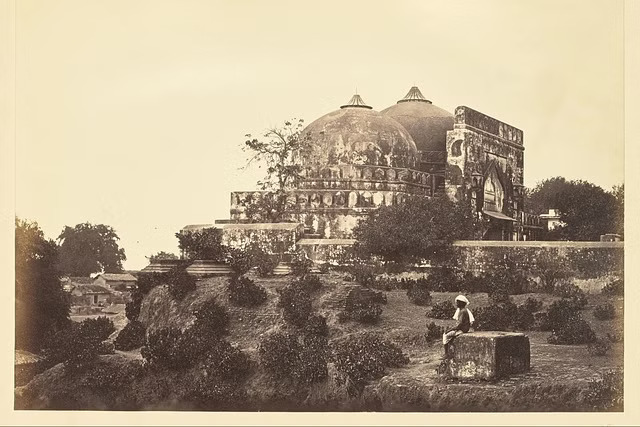The revised NCERT Class 12 Political Science textbook, featuring updates announced in April, is now available in the market. These updates introduce notable modifications to Chapter 8, titled “The Ayodhya Issue”. The changes reflect a shift in the portrayal of historical events related to the Ayodhya dispute. This chapter now includes revised descriptions, terminologies, and perspectives. For instance, references to the Babri Masjid have been altered, discussions on communal mobilizations have been reframed, and new legal judgments have been incorporated. Here, we will delve into the five major changes that have been implemented in this chapter.
Removal of Babri Masjid’s Name
In the previous version of the NCERT textbook, Babri Masjid was explicitly described as a 16th-century mosque constructed by Mir Baqi, a general of the Mughal Emperor Babur. This description provided a clear historical context and identified the structure by its widely known name, Babri Masjid.
However, in the newly revised version of the textbook, this explicit identification has been removed. Instead, the structure is referred to more generically as a “three-domed structure”.
This change omits direct mention of Babur and Mir Baqi, thereby reducing the specific historical references associated with the mosque. The new text states, “In 1528, a three-domed structure was built at the birthplace of Lord Ram, but the clear display of Hindu symbols and relics was found inside and outside the structure.” This implies that despite the construction of the structure, Hindu elements were prominently present, hinting at the pre-existing religious significance of the site for Hindus.
Mobilization
The previous version of the NCERT textbook devoted considerable attention to the events following the unlocking of the mosque’s gates in February 1986. It detailed the mobilization efforts by groups, which included significant events such as the Rath Yatra led by political leaders, the kar seva involving the volunteer service by devotees, the eventual demolition of the Babri Masjid in December 1992, and the ensuing communal violence that erupted across various parts of India. This narrative covered two full pages, highlighting the intense activities and the atmosphere of unrest during that period.
In contrast, the new textbook edition takes a more succinct approach. It acknowledges the concerns and perspectives of both Hindu and Muslim communities regarding the site. It states that the opening of the mosque’s locks intensified ownership tensions, leading to numerous disputes and legal battles. This revised narrative focuses less on specific events and more on the general escalation of conflicts and the legal struggles that followed.
Demolition
The earlier book mentioned BJP expressing “regret over the Ayodhya incidents” and noted a “serious debate on secularism” post-demolition. The new book states, “Both communities longed for a fair resolution of this longstanding issue. After the demolition of the structure in 1992, some critics argued that it posed a significant challenge to the principles of Indian democracy.”
Removed and Added Sections
Clippings from newspapers dated December 7, 1992, with headlines like “Babri Masjid demolished, Center dismissed Kalyan government,” have been removed, and the Supreme Court’s decision on November 9, 2019, has been added.
Verdict
Previously, the decision by Supreme Court Justices Venkatachaliah and G.N. Ray, who held the then Uttar Pradesh Chief Minister Kalyan Singh responsible, was mentioned. Now, the November 9, 2019, decision is cited, stating, “…the faith and belief of Hindus have always been that the birthplace of Lord Ram is the site where the Babri Masjid was constructed…”
Conclusion
The changes made in the new NCERT book clearly alter the perspective on the Ayodhya issue. Through these revisions, the presentation of historical facts has been modified, reflecting its impact on Indian society and politics. It remains to be seen how these changes will be reflected in education and society and what their long-term effects will be.
ALSO READ: The Real Reason Why Priyanka Chose Waynad Over Raebareli
